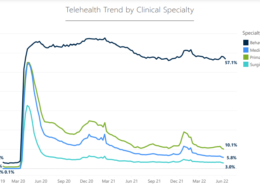Health and Tech Institute
strategy for continuous health transformation
Joaquim Cardoso MSc
Chief Researcher, Editor,
Chief Strategy Officer (CSO), and Senior Advisor
May 31, 2023

Vision of an information architecture that will unlock the power of digital technologies — to create the connected health ecosystem of tomorrow
Introduction
The health industry after the COVID-19 pandemic won’t be the same as before. In the long run, the upside of this disruption is a permanent change in the way health systems, organizations and consumers use digital health technologies.
Widespread adoption of tech-enabled care and emerging technologies will transform the very foundations of health and care.
The image explores a vision of an information architecture that will unlock the power of digital technologies to create the connected health ecosystem of tomorrow.
What it means to be healthy has become broader, moving beyond the traditional confines of the health industry to embody a more diverse, integrated and seamless system of care and well-being.
- Powered by digital health technologies, consumers are actively engaging with health systems in vastly different ways.
- Rather than being content with touch points only when ill or injured, health and care are transitioning to continuous engagement by individuals, with many different stakeholders, and across the lifespan.
Accustomed to on-demand and self-directed experiences in other areas of their digital lives, consumers expect something more; within the next decade, they believe that health care will be anchored around digitally enabled care, including virtual delivery, remote monitoring and interactive person-centered tools.
- We live in a highly connected society, and advances in technologies and 5G connectivity are making possible a suite of new solutions around well-being, remote care, smart homes and communities.
- And while complex and high-risk cases and trauma care within a hospital will always play a vital role in health systems, care models across the board are migrating to lower-cost settings.
- Many of these lie beyond the four walls of the clinic or hospital and are happening closer to the consumer — at home or in the community. (Figure 1)
Source: ” How will you design information architecture to unlock the power of data?”, EY, 2020
David Roberts
Aloha McBride
Rachel Dunscombe
Sheryl Coughlin PhD
Jerome Pagani PhD
Emily Mailes











